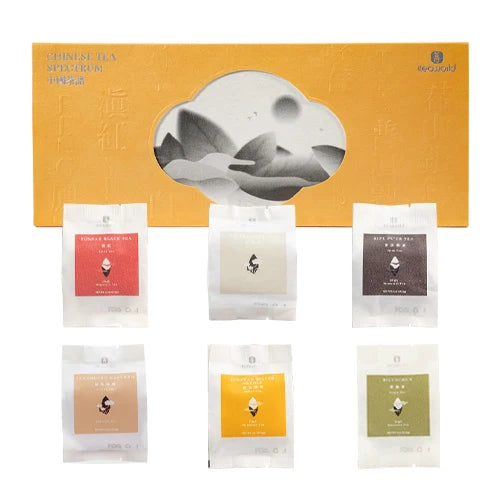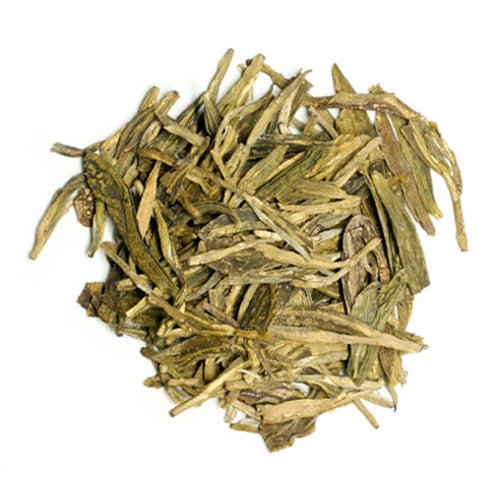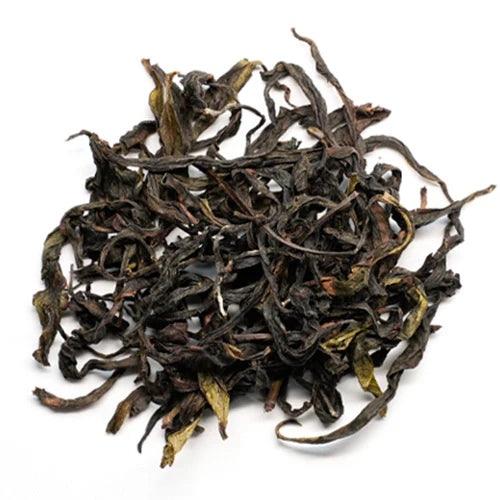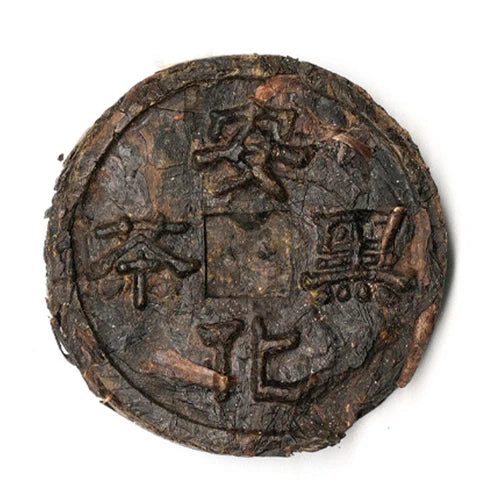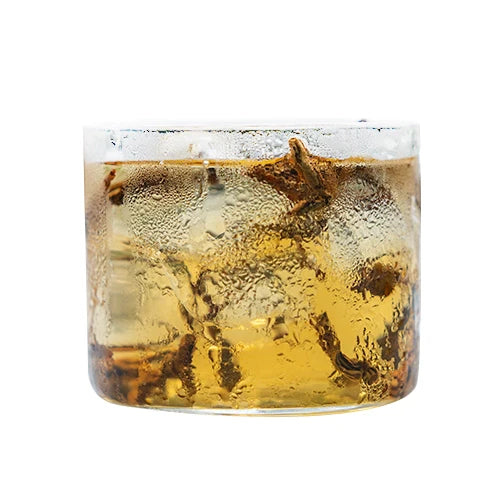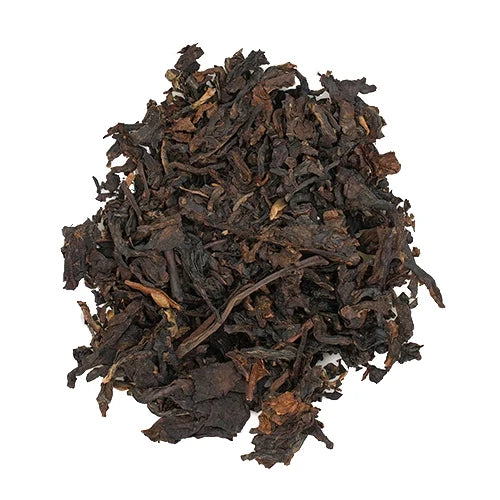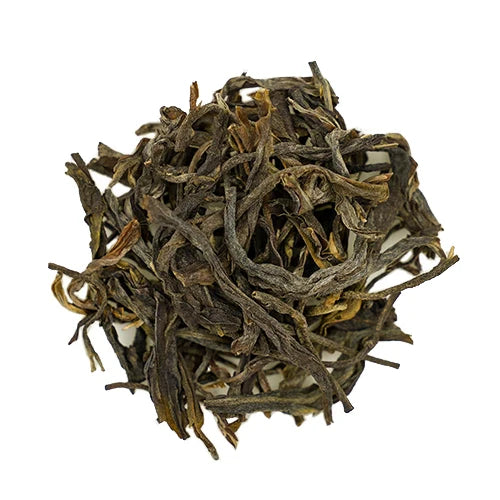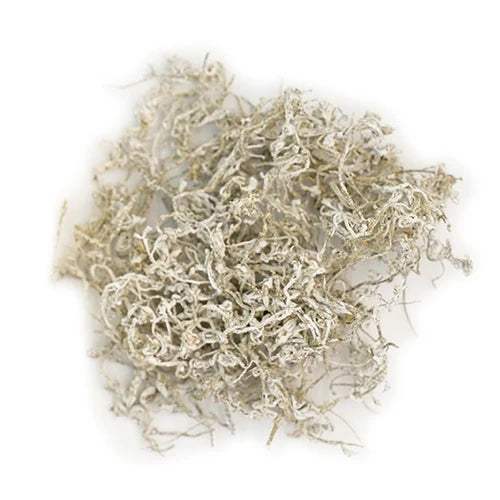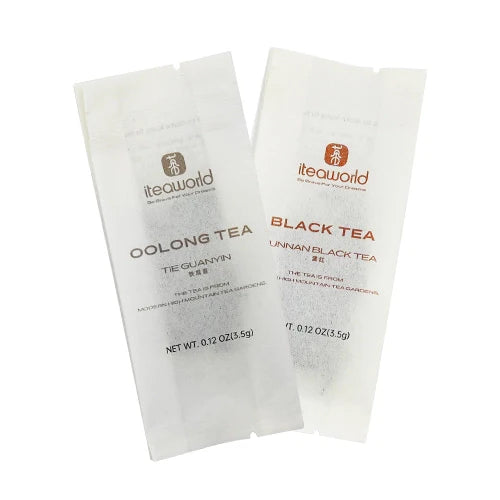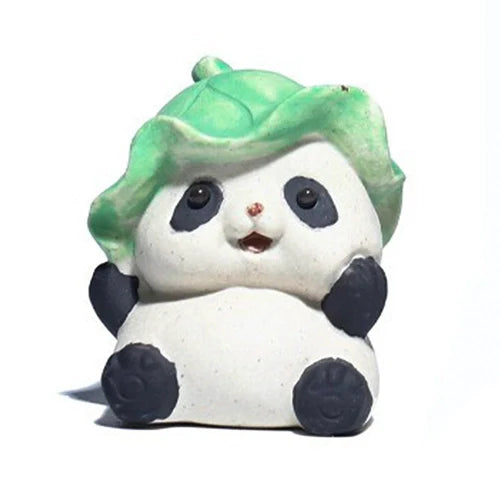Brewing, Tasting, and Storing Oolong Tea

A Beginner’s Guide: How to Brew Tea Using the Chaozhou Gongfu Method
The Gongfu tea brewing method allows the aroma and flavor of Oolong tea to shine at its best. But how can we apply it in our daily lives? This blog will show you how.

A Beginner's Guide: How to Drink Oolong Tea?
Tea enthusiasts will know about loose leaf oolong tea.
This tea is renowned for its delicious aroma and flavor, as well as its various health benefits such as reducing blood lipids, cholesterol, aiding digestion, and weight loss. Loose leaf oolong teas are excellent choice for gifting to family and friends as healthy and delicious tea gift sets.
To fully enjoy the delicious taste of loose leaf oolong tea, having good quality tea is not enough. The brewing method of loose leaf oolong tea largely determines the deliciousness of the tea soup. Below are some key points shared to help novice tea drinkers understand how to better enjoy oolong tea.
Five Tips for Beginners Drinking Oolong Tea
Use Small Cups
Loose leaf oolong tea originated from Fujian, where the locals have a strong preference for it.
Local residents believe that tasting loose leaf oolong tea is not just about quenching thirst; they see it as an artistic expression that integrates mind and soul. They enjoy savoring loose leaf oolong tea slowly using small cups.
Employ Traditional Brewing Methods
Fujian residents still adhere to traditional methods when brewing loose leaf oolong tea.
Before steeping the tea, they rinse the teapot, tea tray, and teacups with freshly boiled water. During the brewing process, they continuously sip while steeping to maintain cleanliness and ensure the tea remains at an optimal temperature.
Time it Right
To savor the delicious taste of loose leaf oolong tea, it's essential to control the brewing time. Generally, steeping for just a dozen seconds is sufficient, although subsequent infusions may require slightly longer steeping times.
Brewing for too long will result in the loss of the fresh flavor of loose leaf oolong tea.
Learn to Smell the Tea
When tasting oolong tea loose leaf, it's important to learn to smell it. Start by slowly moving the tea cup from the front of your nose towards your mouth. While it's still hot, smell its aroma. You'll feel the fragrance gradually entering your mouth, throat, and lungs.
Remember not to place the tea cup too close to your nose while smelling; instead, slowly move it from far to near, and then from near to far, repeating this process three or four times.
There are many different aromas of loose leaf oolong tea. It's recommended to discover the best oolong tea for yourself by trying a tea sampler.
Savor Slowly
After smelling the aroma, you can now taste it. Take a sip and hold it in your mouth before slowly swallowing.
Savor it slowly; you'll feel a sweet and refreshing taste filling your mouth, leaving a lingering aroma. It can also help to refresh your senses and bring a sense of tranquility, like stepping into a fairyland.
Find more loose leaf oolong tea with our Oolong Tea Sampler.>>>
Brewing Method for Oolong Tea
Begin by rinsing the tea utensils with boiling water.
When brewing the tea, slowly pour hot water into the teapot from a higher position. The water temperature should ideally be between 95-100 degrees Celsius.
Cover the teapot with its lid and pour boiling water over it. This helps to maintain the aroma by keeping the tea at a high temperature. Let it steep for about a dozen seconds during this process.
Pour the tea from the teapot into a fairness cup, then distribute it into smaller tasting cups.
Oolong tea should be tasted while hot, with moderate consumption. As you drink, continue to savor the aroma.
Understanding the Classification of Oolong Tea
Loose leaf oolong tea is classified by region into: Northern Fujian Oolong, Southern Fujian Oolong, Guangdong Oolong, and Taiwanese Oolong.
Northern Fujian Oolong is best represented by the "Rock Tea" produced in Wuyi Mountain. Apart from Da Hong Pao, there are also multiple varieties such as Rou Gui, Shui Xian, Tie Luo Han, and Shui Jin Gui.
The famous TieGuanyin belongs to Southern Fujian Oolong. Additionally, Southern Fujian Oolong includes other varieties like Baiya Qilan, Yongchun Foshou, and Zhangping Shuixian, which are relatively affordable.
Guangdong Oolong is represented by Fenghuang Dancong, produced in Fenghuang Town, Chaozhou, Guangdong, with the best coming from Wudong Mountain.
Taiwanese Oolong has a graceful aroma and a honey-green soup color, making it very popular among women and young tea drinkers. Famous varieties include Oriental Beauty and Dong Ding Oolong.
Craftsmanship of Oolong Tea
The production process of oolong loose leaf tea is highly intricate, involving Weidiao(withering), Zuoqing (shaking and resting), Shaqing (killing the green), Rounian (rolling), and drying.
Northern Fujian Oolong and Guangdong's Fenghuang Dancong undergo heavy sun withering and shaking, resulting in a high degree of oxidation and a strip-like appearance.
On the other hand, Southern Fujian Oolong and Taiwanese Oolong emphasize rolling, resulting in a lower level of oxidation and a more spherical shape.
The Greatest Characteristic of Oolong Tea—Its Aroma
The most prominent characteristic of loose oolong tea is its aroma. Some oolong teas, such as Fenghuang Dancong, are renowned for their high fragrance and are considered among the best loose leaf tea.
So how is the aroma of loose leaf oolong tea formed? It mainly stems from the core production process of oolong tea, which is Zuoqing (shaking and resting). This process is unique to oolong tea and is not found in other types of loose leaf tea. Zuoqing (shaking and resting) involves a series of alternating shaking and resting processes, during which polyphenolic substances oxidize and reduce, continuously forming aromatic compounds.
In simple terms, water runs off the surface of the fresh leaves, while a series of actions encourage the flow of water from the stem to the leaf, maintaining the efficient functioning of enzymes within the cells.
Loose leaf oolong tea is a type of tea with a unique taste and a delightful aroma. If you haven't tried loose leaf oolong tea yet, it's worth giving it a try—I believe you'll fall in love with it too!
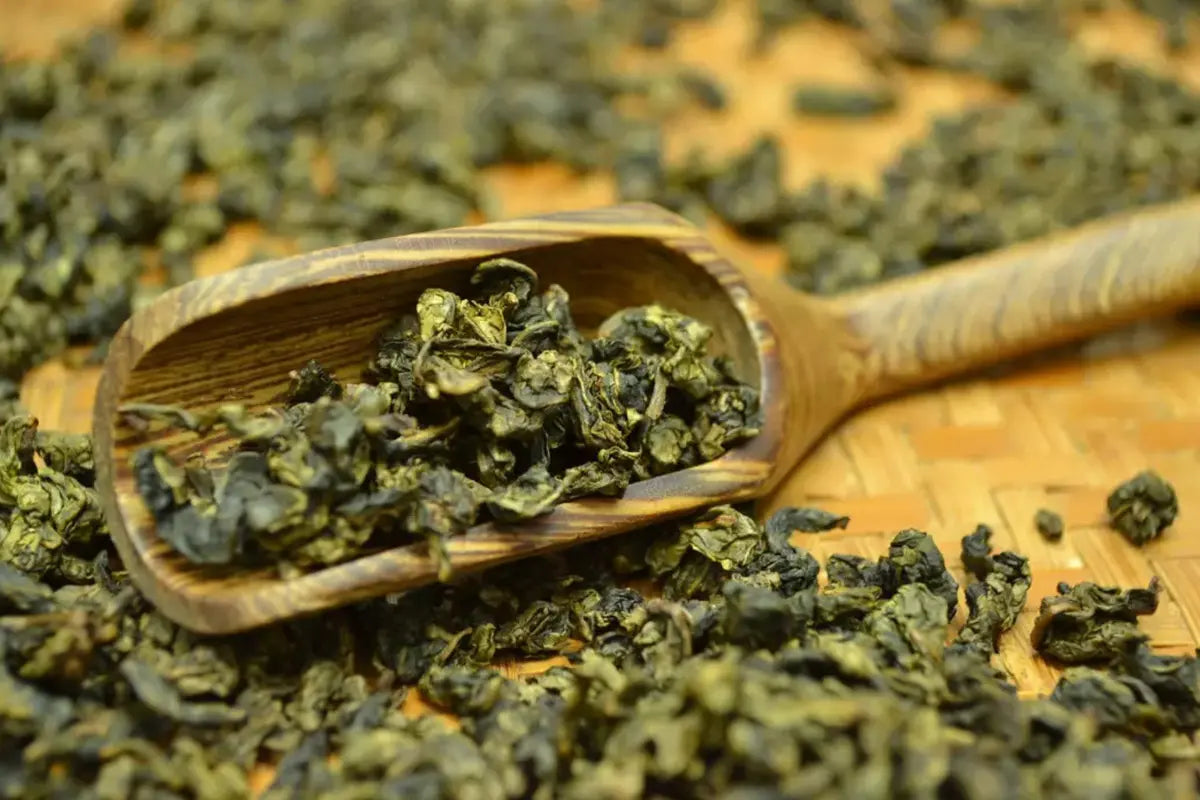
TieGuanyin Delicious Recipes Recommendation
In the realm of gastronomy, using tea in cooking has become quite commonplace. Whether it's frying, steaming, deep-frying, or boiling, various cooking methods can incorporate tea leaves, and they are deeply favored by a wide range of consumers. The reason lies in its delightful taste and the dual effects of preventing diseases and enhancing appetite.Many of you may have heard of Tieguanyin as a famous loose leaf oolong tea. To try the authentic flavor of Tieguanyin, you can purchase some trusted brands such as iTeaworld.
TieGuanyin Beverage Recipes
1. TieGuanyin Caramel Milk Tea
Ingredients: Water, fresh milk, TieGuanyin tea leaves, rock sugar.First, boil water and add TieGuanyin tea leaves. Boil the tea in simmering water for about 5 minutes. After boiling, strain the tea into a container. Simmer rock sugar over low heat until it melts and turns amber in color. Pour the tea into the caramelized sugar; it may solidify, but it will dissolve when reheated. Add a small amount of fresh milk (about a quarter of the tea volume), and you have a rich TieGuanyin caramel milk tea.
This recipe can also be made with Da hong pao
2. TieGuanyin Osmanthus Milk Tea
Ingredients: TieGuanyin tea leaves, osmanthus, water, fresh milk, light cream, condensed milk, white sugar.Infuse 30-50g of TieGuanyin tea leaves and 10g of osmanthus in 1000ml of water. Simmer over low heat for 5 minutes, then cover and steep for 10 minutes. Filter out the tea, add 20g (4 bags) of white sugar while the tea is still hot, and stir to dissolve. Let it cool in the refrigerator. In a lidded container, combine 10g of condensed milk, 50ml of light cream, 100ml of fresh milk, and 300ml of tea. Add about ten ice cubes. Shake well until it froths, pour into a glass, sprinkle osmanthus on top, and you have TieGuanyin osmanthus milk tea.
3. TieGuanyin Lemon Tea
Ingredients: TieGuanyin tea leaves, lemon, honey, water.Rinse the teaware with boiling water to warm it, add the appropriate amount of tea leaves, and pour boiling water to steep for one minute. Discard the first tea infusion (also known as washing the tea). Pour in about 80% of boiling water, cover, and steep to release the aroma. When the tea cools slightly, cut and clean half a lemon, squeeze it into the tea, and cut the remaining lemon into pieces. Place the lemon pieces in a tea cup, add honey, and when the tea cools to around 50 degrees Celsius, pour it into the cup. A cup of TieGuanyin lemon tea is ready, carrying a delicate fragrance and pure sweetness, with a refreshing taste unique to tea.
TieGuanyin Dessert Recipes
1. TieGuanyin Milk Pudding
Ingredients: Milk, light cream, white sugar, gelatin sheets, sodium alginate, TieGuanyin, water, calcium lactate.Soak 5g of gelatin sheets in ice water. Mix 150g of milk, 100g of light cream, and 30g of fine sugar in a pot, heat until the sugar dissolves and small bubbles appear, then turn off the heat. While it's hot, add the soaked gelatin sheets and stir until melted. Strain the liquid into tea cups, let it cool, and refrigerate for at least 4 hours, preferably overnight.Brew 5g of TieGuanyin in boiling water, filter out the tea leaves, and use only the tea. Mix the tea with 3g of sodium alginate, stir evenly, and let it sit overnight to eliminate bubbles. Pour calcium lactate into clean water, stir well, then use a dropper to drop the tea into the solution. Once it turns into pearls, remove them, preventing the film from becoming too thick. Take out the chilled milk pudding, top it with TieGuanyin pearls, and you have a refreshing TieGuanyin milk pudding.
2. TieGuanyin Pomelo Cake
Ingredients: TieGuanyin tea leaves, pomelo, pineapple, water chestnut flour, white sugar, water.Add TieGuanyin tea leaves to 1000g of water, boil, and remove the tea leaves. Add 500g of water chestnut flour to the TieGuanyin water and mix well. Peel and remove the pith from the pomelo, and cut the flesh into pieces.In a separate pot, dissolve 1000g of white sugar in 1500g of hot water. Heat until the sugar completely dissolves. Mix the TieGuanyin water and water chestnut flour paste with the pomelo pieces into the sugar water. Stir well and steam for 1 hour. The resulting TieGuanyin pomelo cake has a fragrant tea aroma with a hint of sweet and sour from the pomelo.
This recipe can also be made with Fenghuang Dancong
TieGuanyin Cooking Recipe
1. TieGuanyin Tea-infused Shrimp
Ingredients: TieGuanyin, water, fresh shrimp, minced garlic, salt, green onions.Soak TieGuanyin in hot water and set aside after cooling. Clean the shrimp by removing the heads, veins, and shells, and make a cut along the back. Filter the tea broth and soak the prepared shrimp in it. Drain the tea leaves.Remove the soaked shrimp, drain excess water, heat the oil to 60% hot, fry the tea leaves until crispy, and remove them. Keep the oil temperature at 60% and fry the shrimp for 1-2 minutes. In a hot pan, add garlic, then add the shrimp, stir-fry, add the fried tea leaves, salt to taste, and finally, sprinkle with green onions. Plate and serve.
2. TieGuanyin Braised Duck
Ingredients: One duck, TieGuanyin, a moderate amount of Chinese medicinal herbs, black dates, brown sugar.TieGuanyin has a strong and lasting aroma, a golden soup color, and a sweet and refreshing taste, possessing certain nutritional value and medicinal properties. It is excellent for braising duck. There are two ways to prepare this dish.The first method involves opening the duck belly, cleaning it, and placing TieGuanyin tea leaves inside along with some Chinese medicinal herbs for added flavor.The second method is to brew a large pot of TieGuanyin tea with hot water, repeatedly infusing until there is enough tea. Cut the duck into pieces, add the brewed tea, along with a suitable amount of black dates and brown sugar. Cook over heat. After it's done, sprinkle some tea dust on top to enhance the aroma. This dish is rich in nutrients and is suitable for children during their growth.Tieguanyin is not only a tea that makes a great cup of tea, but it also makes a very tasty dish. Not only Tieguanyin, but many other oolong teas can be paired with food to bump up strange flavors. If you want to try a variety of loose leaf oolong teas, we suggest you start by trying the Tea Sampler.There are a lot of brands out there that offer oolong tea samplers, but they are rarely quality loose leaf oolong tea samplers. You can tryiTeaword has launched the New Oolong Tea Sampler, which contains classic oolong teas such as Phoenix Monoceros and Dahongpao in addition to Iron Goddess of Mercy, taking you on a journey through the flavors of the best loose leaf teas. Tieguanyin is not only good to drink, but it is also very flavorful to use in a variety of recipes and is well worth a try.Tea in the dish, the cost of its ingredients is low, and simple and convenient. As you can see from these recipes, there are a variety of ways to cook with Tieguanyin, some of which are easy to follow. This way it is no longer difficult to make a delicious tea dish.
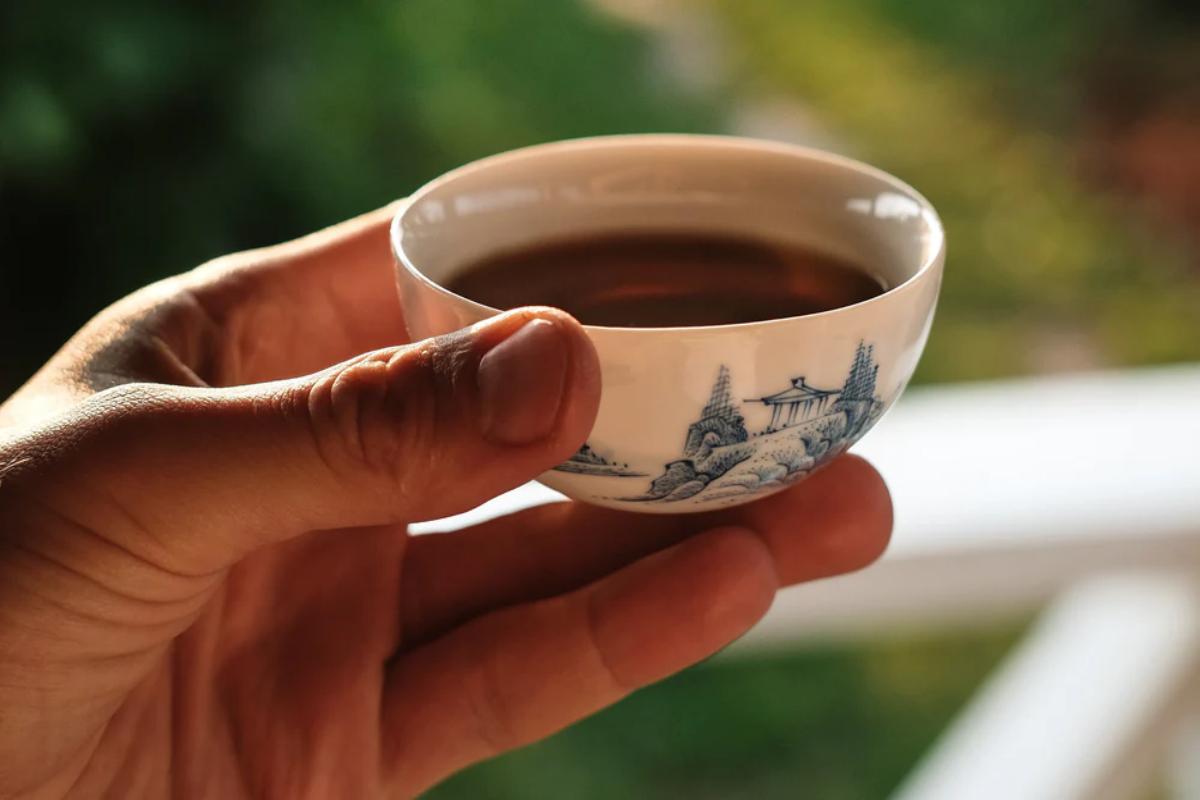
Does Oolong Tea Have Caffeine? Exploring the Caffeine Content in Oolong Tea
Introduction
Oolong tea, with its rich flavor and unique characteristics, has captivated tea enthusiasts around the world. As a traditional Chinese tea, it offers a delightful balance between the freshness of green tea and the depth of black tea. One aspect that often intrigues tea enthusiasts is the caffeine content in Oolong Tea. In this comprehensive guide, we will delve into the fascinating world of Oolong Tea and explore its caffeine content. Additionally, we will provide valuable insights into selecting the right Oolong Tea, brewing techniques to unleash its flavors, and proper storage methods to maintain its freshness.
I. Caffeine in Oolong Tea
Before diving into the specifics of Oolong Tea, it is essential to understand caffeine in tea. Caffeine is a naturally occurring compound found in tea leaves, belonging to the class of xanthine alkaloids. It is responsible for the stimulating effects associated with tea consumption. However, compared to coffee, tea contains lower levels of caffeine, making it a popular choice for those seeking a milder energy boost.
The caffeine content in Oolong Tea varies depending on various factors. Leaf age and size, growing conditions such as altitude, climate, and soil composition, as well as tea processing techniques, all play a role in determining caffeine levels. It is noteworthy that Oolong Tea generally contains less caffeine compared to black tea but more caffeine compared to green tea.
II. Selecting Oolong Tea
When embarking on the journey of exploring Oolong Tea, it is crucial to understand the different varieties available and their unique characteristics. Two renowned Oolong Tea varieties worth exploring are TieGuanyin and Minnan Narcissus.
TieGuanyin, a genuine and authentic Anxi Oolong Tea, originates from a region surrounded by mountains and veiled in mist. Anxi's favorable climatic conditions, including an average annual temperature of 15-18℃, a frost-free period of 260-324 days, and an annual rainfall of 1700-1900mm, contribute to the unique flavor of TieGuanyin tea trees. In fact, the 300-year-old TieGuanyin has been honored with the prestigious "Global Important Agricultural Cultural Heritage" certificate.
Minnan Narcissus, on the other hand, is a sought-after Oolong Tea variety from Fujian Province. This tea has undergone Japanese Organic Food Safety Tests, ensuring its quality and authenticity. Minnan Narcissus boasts tea leaves from 60-year-old tea trees, which metabolize carbonaceous compounds and result in higher sugar and polyphenol content. The leaves from old trees produce dense, smooth, sweet, and thick brews. The misty high mountains where Minnan Narcissus is grown contribute to lusher vegetation, higher organic matter content in the soil, and an extreme day and night temperature difference that promotes the accumulation of tea substances in the leaves.
When selecting the best loose leaf tea of Oolong Tea, it is essential to consider the flavor profile and characteristics of each variety. TieGuanyin offers a delicate and floral taste with a lingering sweetness, while Minnan Narcissus provides a rich and aromatic experience with its high sweetness and resteepable leaves. To ensure authenticity, it is recommended to source the best loose leaf tea of Oolong Tea from trusted suppliers who prioritize quality and maintain a reputation for genuine products.
III. Brewing Oolong Tea
To fully appreciate the flavors and nuances of Oolong Tea, proper brewing techniques are essential. Here are some considerations for achieving an optimal brew:
1. Water temperature and steeping time: Oolong Tea is sensitive to water temperature, and the ideal range varies depending on the variety. Generally, a water temperature between 180-200°F (82-93°C) is suitable for most Oolong Teas. Steeping times can range from 1-5 minutes, depending on personal preference and desired flavor intensity. Experimentation is encouraged to find the perfect balance.
2. Brewing methods: Traditional brewing methods such as Gongfu Cha can enhance the Oolong Tea experience. Gongfu Cha involves using smaller teaware and multiple short infusions to extract the full range of flavors. Alternatively, Western-style brewing with larger teapots or infusers is also a popular approach. The choice of brewing method depends on personal preference and the time available for tea preparation.
3. Tea-to-water ratio: Achieving the right tea-to-water ratio is crucial for a well-balanced brew. As a general guideline, 1 teaspoon of Oolong Tea per 8 ounces (240 ml) of water is a good starting point. Adjustments can be made based on personal preference for a stronger or milder brew.
IV. Storing Oolong Tea
Proper storage is vital to maintain the freshness and flavors of Oolong Tea over time. Here are some key considerations:
1. Storage conditions: Oolong Tea should be protectedfrom moisture, light, and strong odors. It is best to store Oolong Tea in airtight containers made of opaque materials, such as ceramic or tin. These containers will shield the tea leaves from exposure to air and light, preserving their flavors and aromas.
2. Shelf life and freshness: Oolong Tea is best consumed within a certain timeframe to ensure optimal taste. While the shelf life of Oolong Tea can vary depending on the variety and processing methods, it is generally recommended to consume it within 6-12 months of purchase. As time passes, the flavors of Oolong Tea may change, becoming more mellow or developing different notes. Regularly assessing the tea's freshness and adjusting brewing parameters accordingly will help maintain a delightful tea experience.
Conclusion
In conclusion, exploring the caffeine content in Oolong Tea provides valuable insights for tea enthusiasts and consumers. Understanding the factors that influence caffeine levels, such as leaf age, growing conditions, and tea processing techniques, allows for informed choices when selecting Oolong Tea varieties.
TieGuanyin and Minnan Narcissus stand out as remarkable Oolong Tea varieties, each with its own unique flavor profile and characteristics. Proper brewing techniques, considering water temperature, steeping time, and tea-to-water ratio, enable tea lovers to unlock the full potential of these teas and enjoy a delightful tea experience.
Lastly, the proper storage of iTeaworld loose leaf tea is crucial for maintaining its freshness and flavors. Shielding the tea leaves from moisture, light, and strong odors through appropriate storage containers ensures the longevity of the tea's quality.
At iTeaworld, we are passionate about bringing you the finest selection of Oolong Tea varieties, including TieGuanyin and Minnan Narcissus. Explore our wide range of teas and embark on a journey of exquisite flavors and aromas. Start your tea adventure with iTeaworld today.
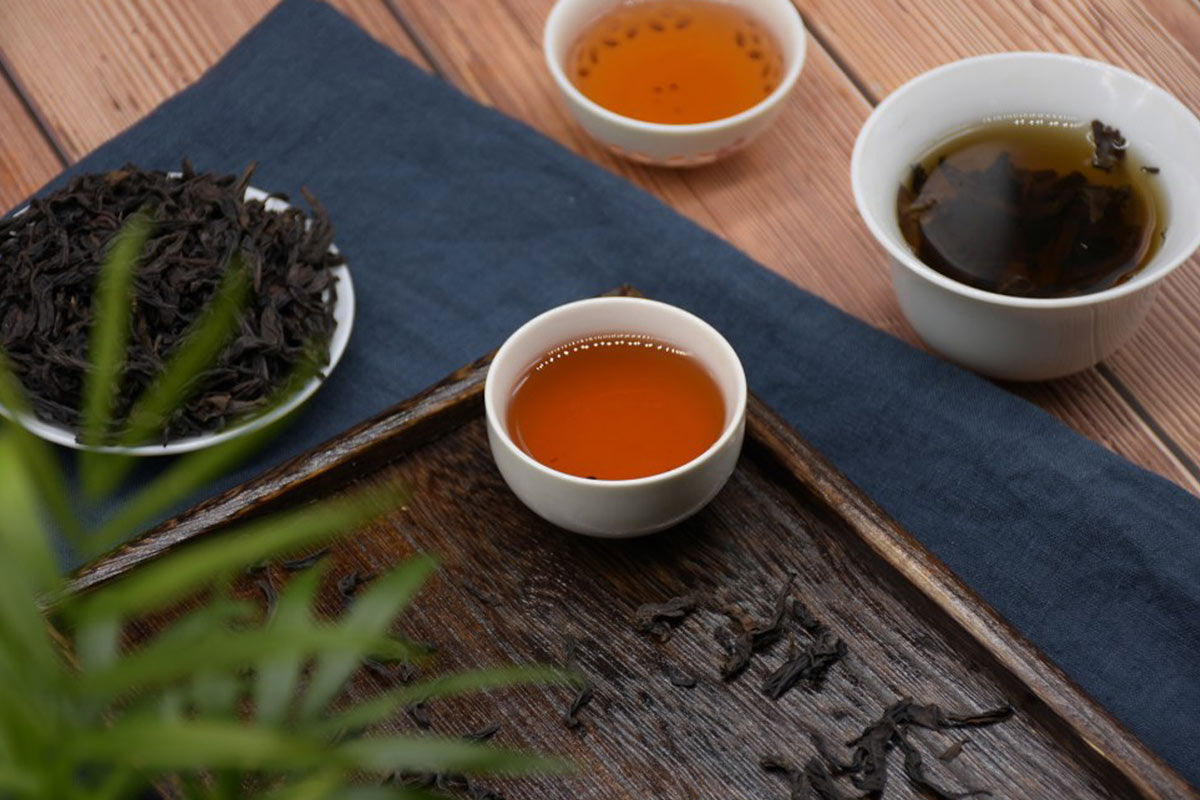
Brew Da Hong Pao: Everything You Need to Know
Dahongpao is one of the most famous oolong teas in China. Dahongpao is produced in Wuyi Mountain, Fujian Province and belongs to Wuyi Rock Tea.
Dahongpao is one of the best varieties of rock tea, but if you don't have the right brewing skills, you won't be able to savor its mellow aroma. This article will guide you how to brew a good cup of Dahongpao!
Required Tools:
A Yixing clay teapot or a porcelain gaiwan, an electric kettle, and a basic Gongfu tea set (including a fairness cup, a tea set, and a tea container). Tea: Da Hong Pao.
Brewing Steps:
1.Preheat the Teapot:
Da Hong Pao requires a high water temperature (90℃~95℃) to fully express its flavors. Warm up your tea set with boiling water to ensure even heating.
2.Add Tea:
Adopt the "bottom-insertion" method. Use a tea scoop to add an appropriate amount of tea (generally 5~7 grams) to the teapot.
3.Rinse the Tea:
Rinse the tea as previously described, quickly.
4.Pour Water:
Pour in boiling water, cover with the lid and steep for 1~2 minutes. During this time, pour boiling water over the pot at least three times. Only at a high temperature can the rich aroma be fully released.
5.Pour the Tea:
Pour the brewed tea into the fairness cup swiftly to prevent the aroma from escaping.
6.Serve:
Distribute the tea from the fairness cup into the tasting cups. This allows you to both enjoy the aroma and observe the tea's form.
Tips:
When you want to enjoy authentic Dahongpao tea, choose loose leaf tea over tea bags. It is the loose leaf tea that will bring out the full flavor of the tea.
1.The first brew of Da Hong Pao should last about 12 minutes. Adjust the timing based on the age of the tea and the quantity used. Each subsequent brew can be extended by 510 seconds. Da Hong Pao can withstand multiple brews, up to 7~8 times.
2.Top-insertion Method: Pour water before adding tea. This is suitable for particularly delicate best loose leaf teas. After pouring boiling water until about 70% full, let it cool to around 75°C and then add the tea. This method is ideal for tender premium green teas like Bi Luo Chun and Xinyang Maojian. Loose or fuzzy teas aren't suitable for this method.
3.Middle-insertion Method: First, pour boiling water till about 1/3 of the cup is filled. Once cooled to around 80℃, add the tea. After a brief moment, add more water till the cup is 70% full, then enjoy.
4.Bottom-insertion Method: Add tea first, followed by water, suitable for loose leaf teas. First, add the tea leaves. Then, pour in water at around 85℃ until it fills 1/3 of the cup. After around 15 seconds, pour in more water until 70% full and let it steep.
Recommended Dahongpao Tea
Dahongpao is a type of tea that belongs to Oolong tea. If you are trying oolong tea for the first time, I suggest you not to try Dahongpao first. You can start by choosing some oolong tea selection. This way you can experience several loose leaf oolong teas and find your favorite flavor from them with minimal cost. Generally famous oolong teas include tieguanyin, fenghuang dancong and so on.If you are an experienced tea drinker, then you must try Dahongpao. Dahongpao is a famous variety of oolong tea. You will be sorry if you have not tried it. There are many Dahongpao teas in the market now. You need to distinguish them carefully. iTeaworld's Dahongpao is one of the good choices. There are many people on Reddit who have tried it. A lot of tea lovers have good feedback on this dahongpao.If you are still hesitating on how to choose. You can boldly try iTeaworld.
Potential Health Benefits of Dahongpao
Dahongpao not only tastes great but also has many potential health benefits.1. Weight lossDahongpao tea contains caffeine, inositol, folic acid, pantothenic acid and aromatic substances and other compounds, not only can regulate fat metabolism, and has a very good analysis of protein and fat, to a certain extent, to help lose weight.2. RefreshingDahongpao tea is rich in caffeine, caffeine will stimulate the body's central nervous system, help to refresh the brain!3. DigestiveThe caffeine factor in the big red robe tea can also improve the permeability of gastric juice, can promote the intestines and stomach under the means of peristalsis, assist digestion. After a big fish and meat, drink some Dahongpao tea, but also can play a role in the demulcent.4. Eye protection and eyesightDahongpao tea is high in vitamins, often drink, help to reduce the turbidity of the eye crystals, can cover, bright eyes. On those who often use the computer crowd, especially suitable!
In Summary, the Three Key Elements of Brewing:
Finally, to summarize the methods mentioned above, I would love you to make a great cup of Dahongpao!
Tea dosage to make a good tea, to master the amount of tea. How much each time, there is no uniform standard, mainly based on the type of tea, the size of the tea set, the tea drinker's drinking habits. Bubble tea amount of more or less, the key to master the proportion of tea and water, tea more water, taste thick; tea less water, taste light.
Water temperature tea boil water, to big fire boil, do not warm fire slow cooking. To just boil bubbling appropriate, with soft water boiling tea, tea flavor is better. If the water boiled for too long, that is, what the ancients called "water old". At this point, the carbon dioxide dissolved in the water evaporated, the fresh flavor of the tea leaves, that is lost. Bubble tea water temperature mastery, mainly based on what kind of tea. Green tea, generally can not use 100 ℃ of boiling water, should be 80 ℃ ~ 90 ℃ of water is appropriate (water to boiling point, and then cooled to the desired temperature). The more tender green tea leaves, the lower the temperature of the brewing water, so that the tea broth is fresh and bright, crisp flavor, vitamin C is also less destructive. At high temperatures, the tea broth is darker in color, vitamin C is destroyed in la、rge quantities, and the taste is more bitter (the caffeine in the tea is easy to leach out), which means that the tea leaves are "scalded".
Time tea
Brewing time and number of times, varies greatly, with the type of tea, water temperature, the amount of tea, tea drinking habits, etc. are related. According to the test, when brewing for the first time, the soluble substances can be leached out 50% to 55%; the second can be leached out about 30%; the third can be leached out 10%; the fourth is left little.






